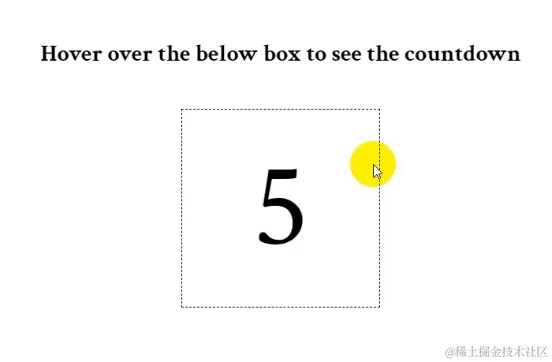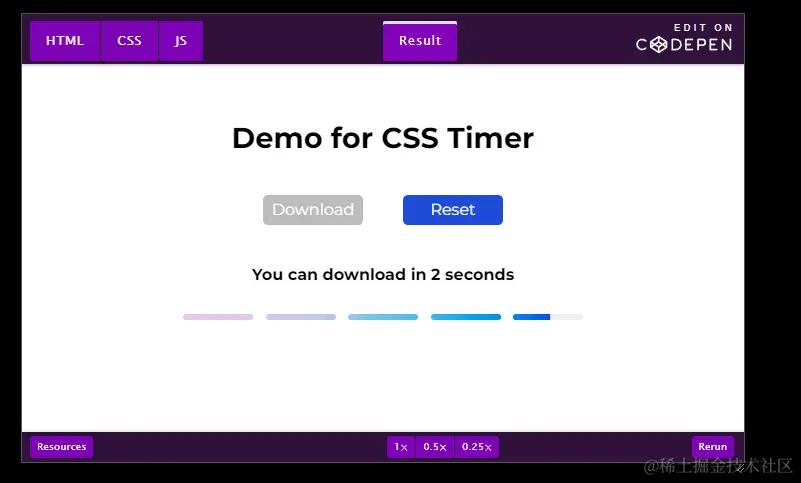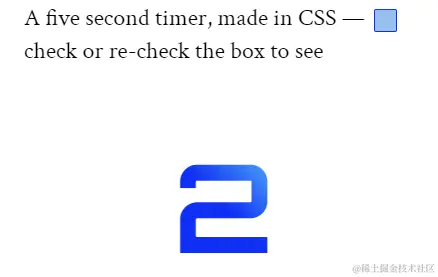【翻译】如何实现一个纯CSS计时器
前言
有时我们会在页面上使用计时器。通常我们会用js实现计时器功能,但某些时候更适合用css,比如某些邮件客户端不支持运行js。
4个属性
- counter():一个css函数,返回一个代表计数器的当前值的字符串。它通常和伪元素搭配使用,但是理论上可以在支持值的任何地方使用。
1 | counter(计数器名称); |
- @property:自定义css属性,兼容性不是特别好,值的类型可以是integer、number、color、url、percentage、transform-function等。
1 |
|
- 伪元素
- @keyframes
3个要求
实现的效果如下图所示,鼠标移动到框内开始倒计时。
实现这个计时器需要做到以下3点:
- 可以从5递减到0的数字;
- 一种计时5秒并递减每个秒数的方法;
- 一种在页面上显示递减数字的方法;
第一点,我们可以用 @property 创建一个自定义属性。
@property --n {
syntax: "<integer>";
inherits: false;
initial-value: 0;
}
注意,是整数类型,包括0、正整数、负整数。如果希望是带小数点的数字可以用number。
第二点,我们可以用 @keyframes 实现。
1 | @keyframes count { |
第三点,我们可以用 counter-reset 实现。
1 | .timer:hover::after { |
content不接受数字类型的值,所以需要借助counter()。
前面提过,counter(),接收计数器名字做参数,返回计数器当前值。
使用计数器前必须使用counter-reset初始化计数器。
counter-reset:第一个参数必选,计数器名;第二个参数,计数器初始值,默认是0。
源码
完整代码如下:
1 | @property --n { |
进阶
借助这些知识,可以设计更复杂的计数器,比如向上计数,美化ui,与其他loading(比如圆形进度条等)结合。
另外,css自定义属性也可以在js中创建和修改,创建用 registerProperty() ,修改用 setProperty() 。如果想知道动画是否完成,可以用 animationend 监听。
链接
本博客所有文章除特别声明外,均采用 CC BY-NC-SA 4.0 许可协议。转载请注明来源 河豚的前端之路!
评论









.png)